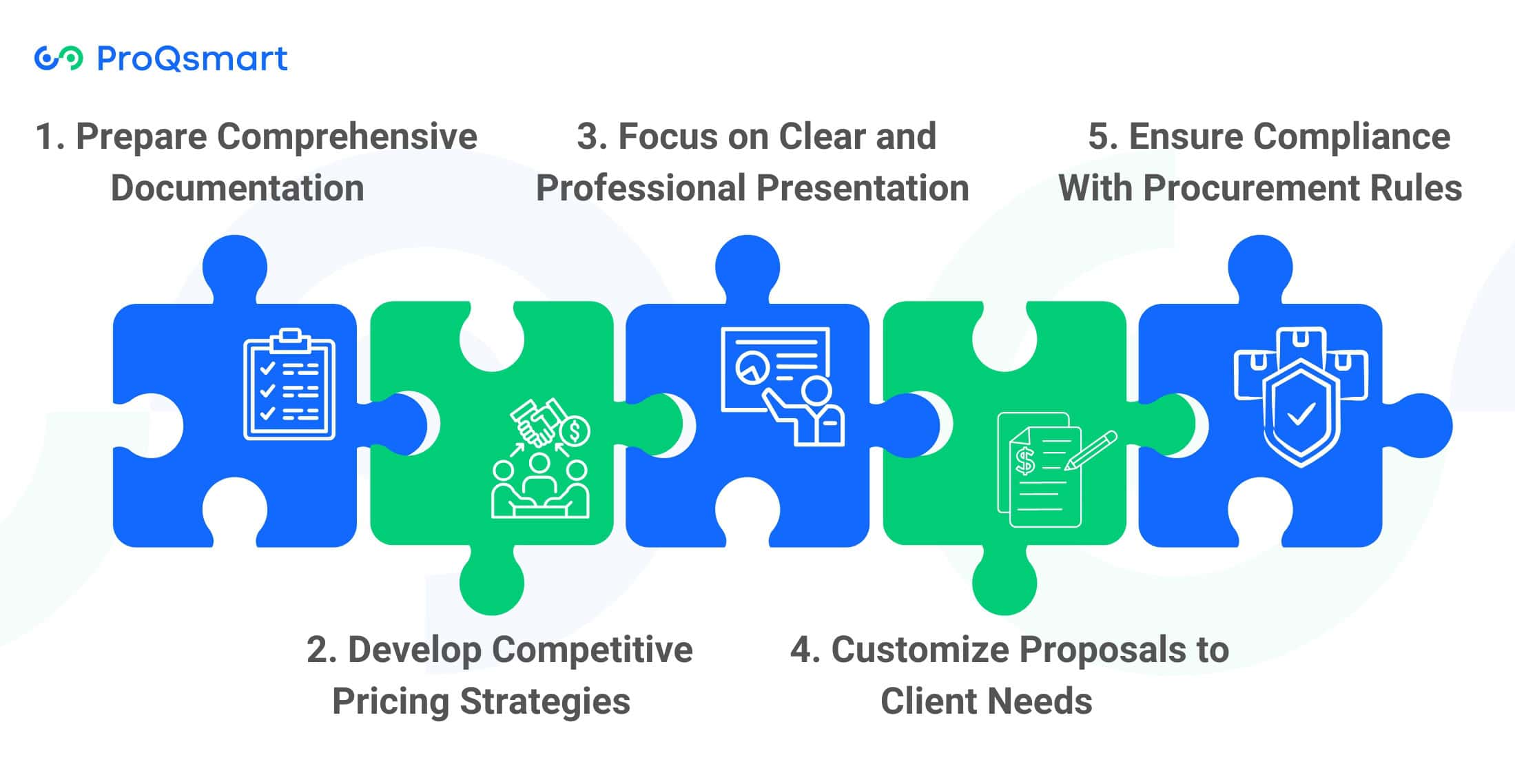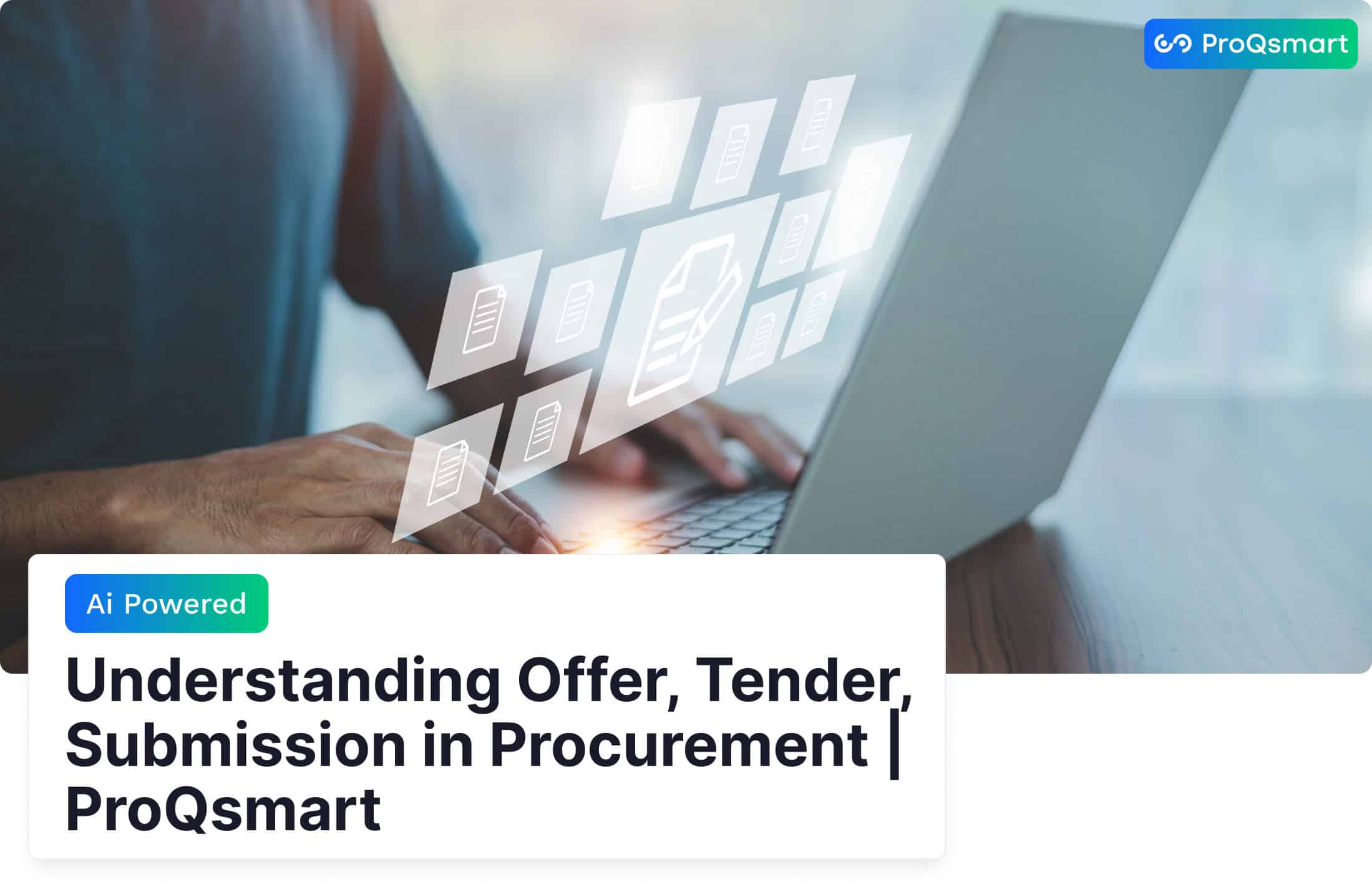A tender is a formal invitation issued by organizations to suppliers or contractors, requesting proposals for goods, services, or projects. It is an important procurement tool for the government, promoting transparency, competition, and fairness in choosing suppliers.
Tenders are formal invitations that provide all the requirements, specifications, terms, and evaluation criteria, allowing businesses to select the best vendor through a fair process. In the United States, many industries including construction, manufacturing, and the interior fit-out sector widely utilize tenders.
This practice allows them to meet their communities’ needs with the best cost-effective, reliable solution. The process requires careful engineering, thorough record-keeping, and compliance with all regulatory requirements.
To achieve strategic sourcing, procurement professionals need to understand tender processes. With this knowledge, they’re able to optimize costs and build strong supplier relationships.
Understanding Offers in Procurement
In procurement terms, an “offer” is what a supplier proposes. It specifies the conditions for supplying goods or services, such as price, quality, and delivery schedule. These offers are the very basis of our procurement, the supplier’s promise, and the scope of what they are to deliver.
While offers may be frequently confused with tenders, it is important to keep the two separate. A tender is a formal process, but one in which the buyer formally invites suppliers to submit competitive bids or offers. In counter, each vendor submits their best offer in this auction format. Offers can come up in less rigid procurement situations, such as sole source negotiations.
Submission Process in Procurement
The submission process is an important step in the procurement lifecycle. It is the fulcrum that links policy intent with real-world results. It is at this stage that suppliers officially submit their bids, after the Buyer has issued their Request for Proposals or tender document.
Without question, this initial step sets the stage for the entire procurement process. It gives the Buyer the authority to judge prospective vendors based on well-established standards. Developing a clear, detailed Request for Information (RFI) document is key. It ensures that only those suppliers with the best capabilities, experience and expertise continue on to the next phase.
Following submission instructions and meeting deadlines is an absolute must. These regulations create a level playing field and transparency while reducing the uncertainty. For example, in procurement, a tender submission typically requires a cumbersome amount of paperwork, making a paper trail to justify each decision easily available.
How Offers and Tenders Work Together
In procurement, offers and tenders create an important connective tissue that matches buyer needs to supplier capacity. A tender invitation is a formal request issued by an organization, aiming to procure goods, services, or works while providing precise, technical, and qualitative specifications and conditions. This process is crucial in ensuring that the needs are met effectively, much like how the tender side of meat is sought after for its quality and flavor.
Offers, in turn, are the suppliers’ responses to those needs, presenting the best possible solutions to specific requirements. Combined, they form a powerful step-by-step process that guarantees transparency, competition, and value-driven outcomes. This is because offers are usually based directly on tender invitations, which include vital information such as technical details and timelines.
This is because offers are usually based directly on tender invitations. When a private business puts out a tender, suppliers look at the information included like technical details, timelines and what will be evaluated, etc. For instance, if a construction firm releases a tender for steel, it could lay out the required grade, durability, and delivery schedule.

Suppliers can then develop offers that respond to these factors, weaving necessary elements into their proposals to meet the expressed requirements. This step is not only important in displaying the supplier’s understanding of the project scope but it’s critical in showing their ability to deliver—down to the letter.
In addition to this, offers are vital in addressing detailed tender specifications. They offer an outlet for suppliers to showcase competitive pricing, innovative solutions or adherence to sustainability standards. For example, a supplier could offer sustainable materials or more affordable transportation methods to win a tender emphasizing sustainability.
This kind of responsiveness increases supplier transparency and credibility, while helping buyers make better informed purchasing decisions.
Best Practices for Offers and Tenders

Submitting a public tender is a serious business – read on for tips on planning and delivering your submission to maximise your chances of success. By adhering to proven best practices, the procurement professional can be more competitive in their submissions and realize better results across the board.
Here, we discuss the key things that go into making more successful offers and tenders.
1. Prepare Comprehensive Documentation
Clear, thorough, and professional documentation bolsters your proposal. Providing every necessary document not only shows professionalism but helps make sure that you meet evaluation criteria.
Avoid losing points by making life easier on your reviewers with clear, succinct, easy-to-follow documentation. This can even have a tangible impact on your evaluation scores. By utilizing an effective response management solution, construction or manufacturing industry can streamline their bidding processes, improve the quality of their submissions, and ultimately increase their chances of winning contracts. This strategic approach not only enhances operational efficiency but also positions the company as a reliable and competent contender in a competitive market.
"Your burden of preparing for tendering is lifted! We've created a comprehensive checklist just for you. Download it now and simplify your tender process!"
2. Develop Competitive Pricing Strategies
Pricing is one of the most important factors that affects the decision-making process. By creating strategies based in the realities of market research, you better reflect what’s out there today, making your offer more appealing to clients.
Having clear pricing helps establish trust and manage expectations up front, an element that buyers are ever more prioritizing as they value transparency. For example, businesses that invest in competitive but fair pricing tend to leave competition in the dust when it comes to winning bids.
3. Focus on Clear and Professional Presentation
Submitted offers and tenders are a direct reflection of your organization’s professionalism and integrity. Use clear, plain language, technical formatting, and data visualization to make your case and build understanding.
It’s important that strong communication doesn’t let the most important point get buried, creating a submission that is both short and powerful. Keep it to two pages or less, to be considerate of the issuer’s time while still demonstrating your expertise.
4. Customize Proposals to Client Needs
Demonstrating that you understand the client’s needs and are prepared to meet them is what wins the day in highly competitive markets. Covering all major pain points and aligning solutions with ultimate client goals shows you know their concerns and means business.
For instance, focusing on sustainability and social responsibility, two of the most important criteria in RFPs today, can further set your proposal apart.
5. Ensure Compliance With Procurement Rules
Compliance with procurement rules is a serious issue. Failure to comply leads to disqualification as well as reputational risk.
Adherence to the guidelines builds confidence with procurement authorities. A strategic, compliant approach helps you build long-term relationships and positions your organization as a reliable partner.
Role of Technology in Procurement
Ultimately, technology has changed the procurement landscape, especially as companies learn to treat sourcing, tendering, and supplier relationships in an entirely new way. Digital tools have introduced efficiency, transparency, and intelligence into processes that were traditionally time-consuming and heavily reliant on manual effort.
These tools aren’t simply a way to streamline workflows. They enable organizations to find fresh opportunities to save money and invest strategically.
Benefits of Technology in Tender Processes
Adopting technology into procurement, specifically tendering processes, provides a myriad of benefits, beginning with improved efficiency. By automating document upload and approval processes, agencies can eliminate unnecessary busywork, cut down on paper-heavy workflows, and make faster, more informed decisions.
For instance, e-tender portals enable companies to handle bids in real-time, avoiding hold-ups due to human mistakes. Transparency is a key advancement. Digital portals like ProQsmart help to centralize important tender information so that it is available to all stakeholders.
This helps ensure that evaluations are objective and auditable, a key consideration for public-facing institutions that want to avoid the risk of non-compliance. Smart data management tools allow procurement teams to analyze bids more holistically and consistently.
By utilizing analytics, organizations can measure patterns, discover the most cost-effective alternatives, and make informed decisions based on data. This helps to ensure that no opportunities are missed, leading to much higher quality procurement strategies.
Streamlining Procurement With Digital Solutions
Digital solutions make communication easy through instant communication tools that promote clear dialogue between buyers and suppliers. Coordinating through platforms such as ProQsmart allows for immediate dissemination of documents, clarifications, and updates that mitigate the opportunity for miscommunication.
This encourages better collaboration with your suppliers and helps everyone involved remain on the same page. Workflow automation minimizes efforts on tedious, manual admin work so teams can focus their time on more strategic priorities.
Challenges in Tender and Offer Processes
While the tender and offer process is an essential pillar of successful procurement, it poses many challenges that might hinder agile and effective tender execution. Unclear requirements, unrealistic timelines, and zero-sum compliance culture usually are a recipe for disaster. These challenges can lead to loss of productivity and increase chances of mistakes.
Identifying these challenges and tackling them head on will be necessary to obtaining the best possible outcomes.
Common Challenges in Procurement Bidding
One of the main challenges is ambiguity in tender specifications. Vague language in specifications or deliverables can create room for misinterpretation, resulting in both wasted time and potential rejection of the bid. These challenges are compounded by tight deadlines that often allow little time for careful analysis.
Fulfilling intricate and industry-specific regulatory requirements poses another challenge, demanding utmost precision and diligence.
With more than 80% of tender questions being the same across projects, it’s a pretty redundant process. Teams often waste more than 20 hours per month due to poor collaboration, underscoring the importance of improved coordination.
How to Overcome Submission Difficulties
Transparent communication with your stakeholders is key to overcoming submission challenges. Pre-bid meetings ensure alignment on requirements, while structured checklists help reduce errors in documentation.
By leveraging tools such as ProQsmart, streamlined submission processes are created through automated workflow, e-tender management, and real-time tracking of submission progress. From compliance validation to supplier performance monitoring, ProQsmart’s features keep businesses on the right side of costly mistakes while ensuring alignment with the latest regulations.
Strategies to Handle Pricing Pressure
Pricing is still the biggest issue with tenders. Cost overruns are common from either underestimating or unforeseen costs. Taking action on this proactively means doing careful cost-benefit analyses and making sure procurement goals are aligned with budgetary realities.
Smart, budget-driven procurement tools help businesses and state and local governments avoid going over budget while ensuring transparency. Budget-tracking in real-time is essential for maintaining control over expenditures.
Conclusion
Tenders and offers are the bedrock of good procurement. They introduce discipline, transparency, and equity to procurement. By understanding and developing these processes, you will have stronger supplier relationships, lower costs, increased confidence in achieving your business objectives.
Technology is a huge factor in allowing these processes to be expedited and more transparent. Tools such as e-procurement platforms like ProQsmart make it easier to submit, track progress and ensure you remain compliant. Challenges such as unclear requirements or short deadlines still exist.
Implementing best practices truly has an impact. Nearly all problems can be avoided with clear communication, thoughtful planning, and a willingness to remain flexible.
To take your procurement processes to the next level, consider leveraging ProQsmart. Our platform provides the tools you need to improve your response management and streamline your procurement efforts. Book a demo today to see how ProQsmart can help you achieve better results in your procurement strategy!





